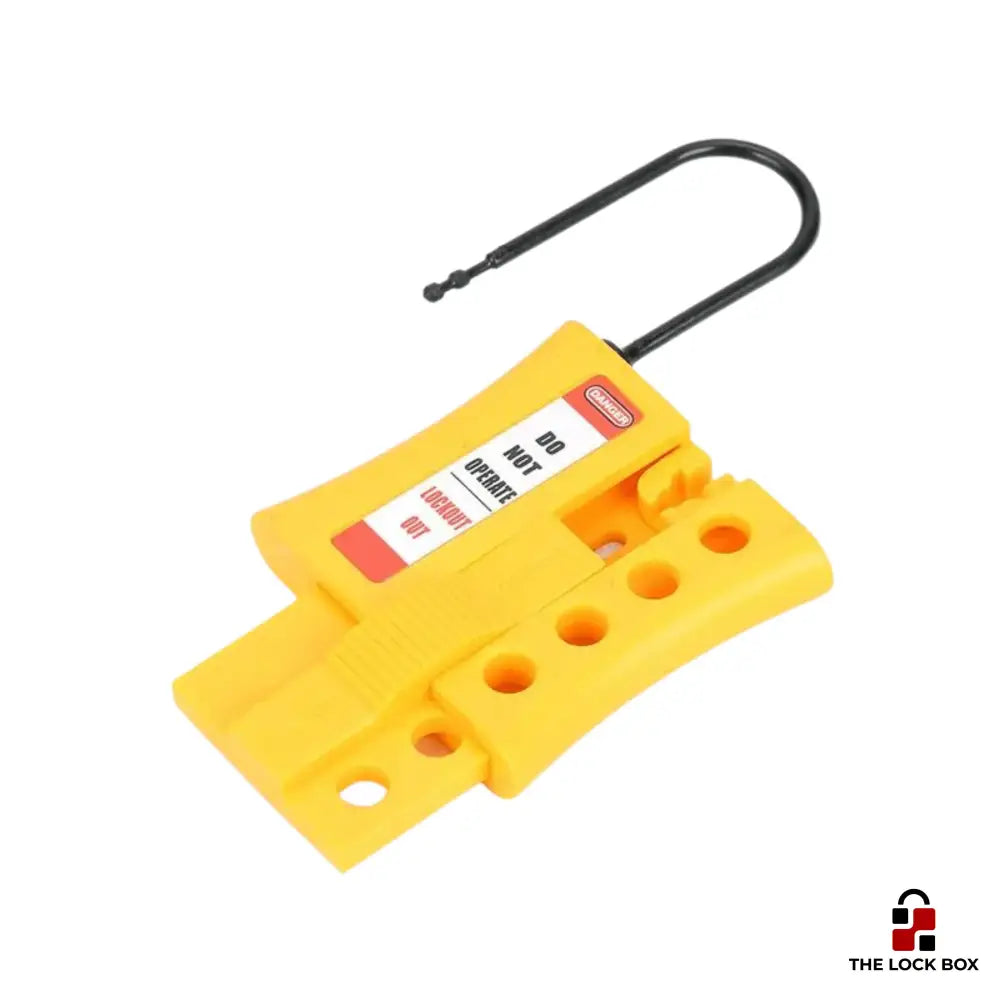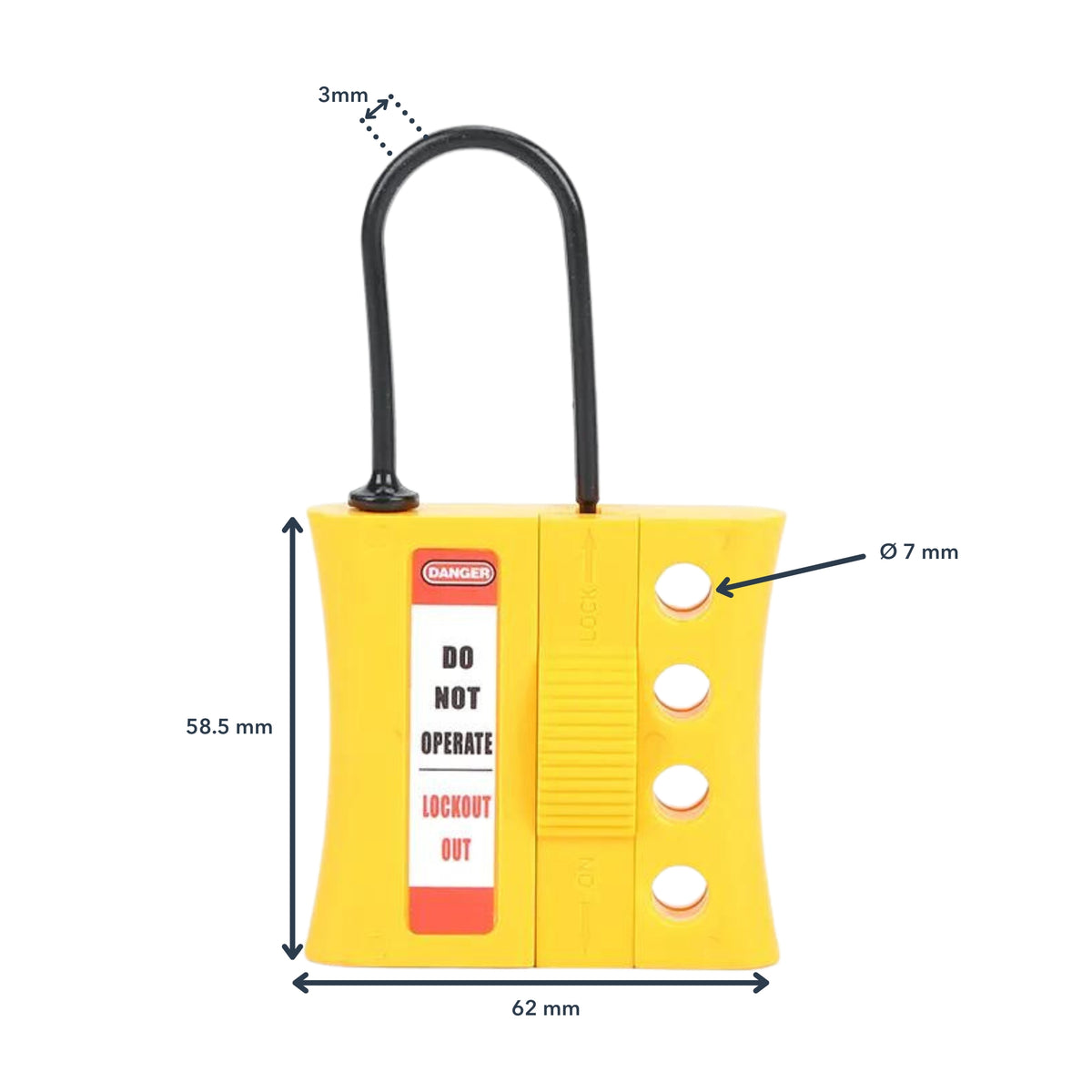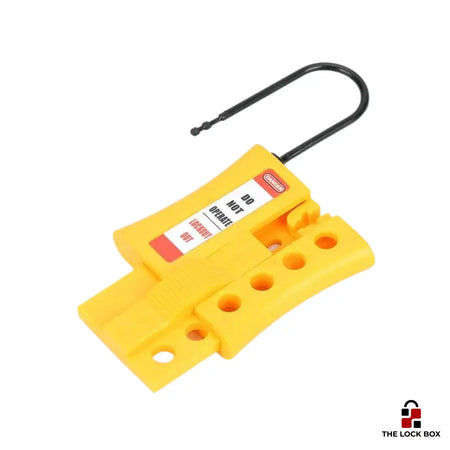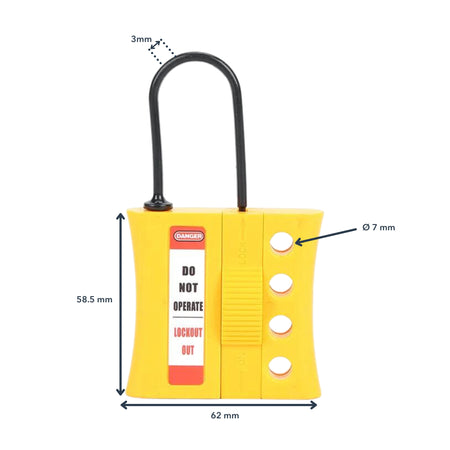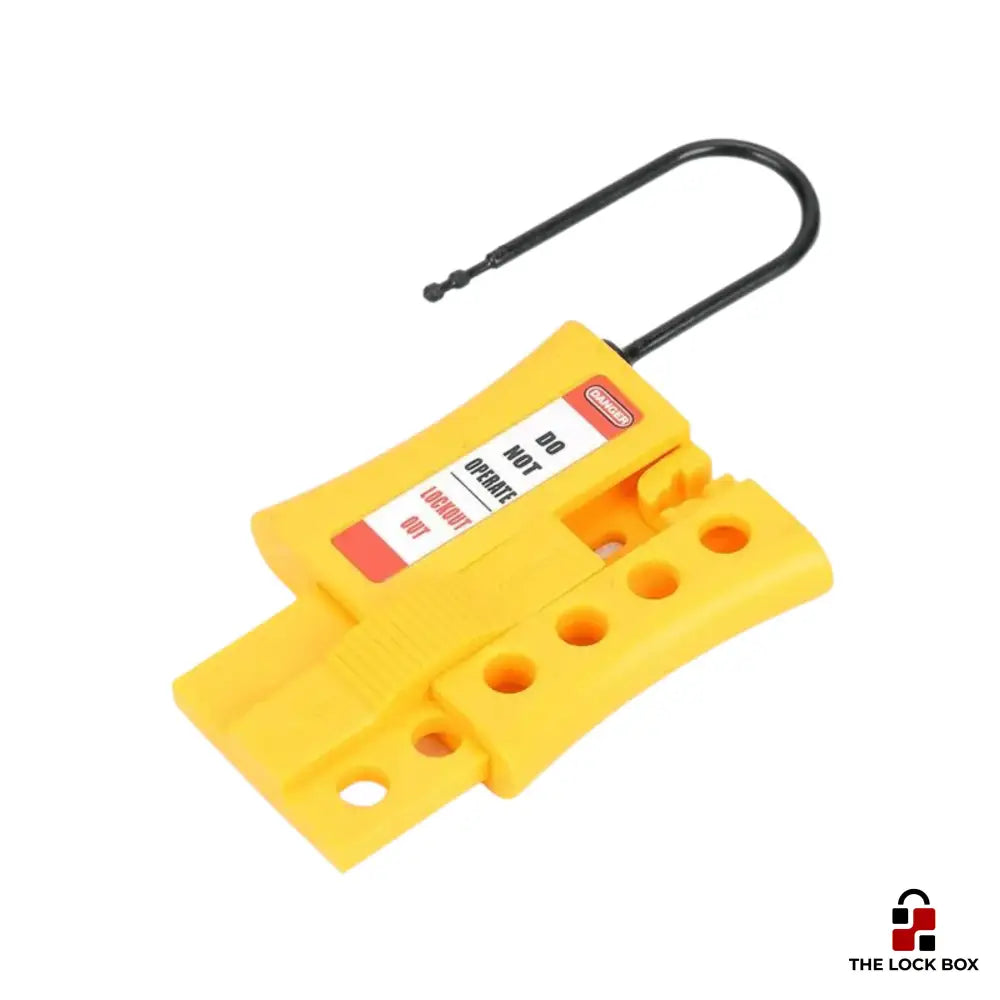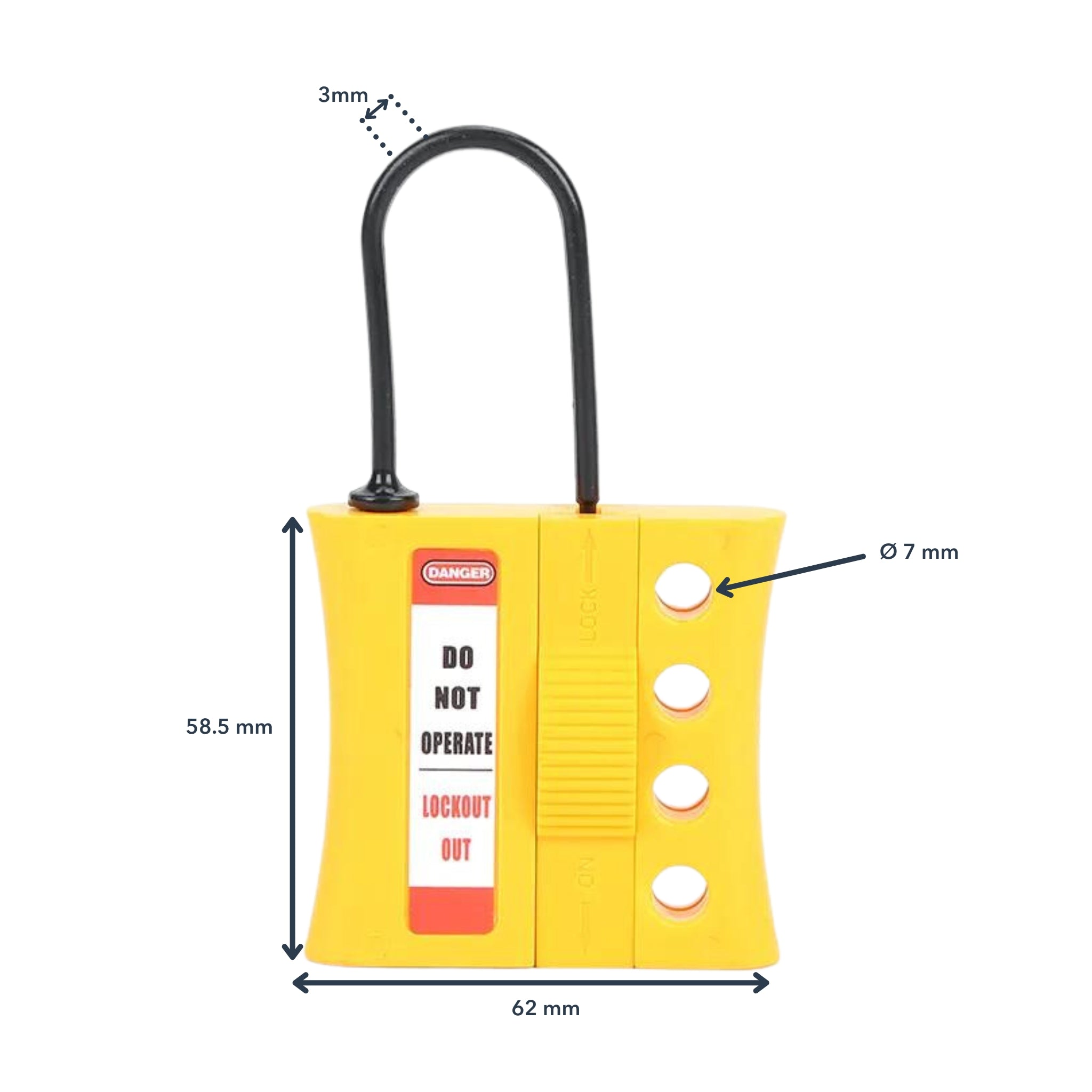Nylon Safety Hasp - LOTO Padlock - Thin
Fits 4 padlocks
Designed to be non-conductive and corrosion resistant.
Want a customised solution, samples or to order in bulk? Reach out to our experts at hello@thelockbox.ch.
Regular price
CHF 24.99
Insulated yellow safety hasp, with thin shackle. Designed specifically for applications where multiple locks are required at a single isolation point.
| Color: | Yellow |
| Dimensions L x W: | 105mm x 62mm |
| Lockout Points: | 4 |
| Material: | Nylon / Durable ABS Plastic |
| Shackle Width: | 3mm |
| Usage: | Chemical, Food & Beverage, Pharmaceutical, Water Utilities |
